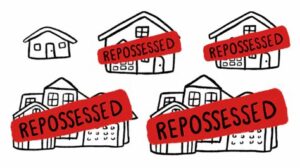Unravelling the Subprime Mortgage Crisis
The subprime mortgage crisis was a real estate market slump that occurred between 2006 and 2008. It is considered the primary cause of the financial crisis of 2007-08 and one of the triggers of the global recession of 2008-09. The subprime mortgage crisis hit individuals, financial institutions, and countries around the world.
and one of the triggers of the global recession of 2008-09. The subprime mortgage crisis hit individuals, financial institutions, and countries around the world.
It left many people who had taken out subprime mortgages unable to repay their loans, and it exposed banks to massive losses when huge numbers of homeowners defaulted on their loans. Fortunately, financial regulators acted quickly to contain the damage. They introduced tighter lending standards for mortgages and other loans, which eventually led to an overall improvement in lending standards from 2018 onward. This blog will cover everything you need to know about the subprime mortgage crisis – from how it all began to what caused it, the numerous players involved, and its impact on financial markets.
What caused the subprime mortgage crisis?
The subprime mortgage crisis, which occurred from 2007 to 2011, was a result of banks lending mortgages to subprime borrowers who couldn’t keep up with payments. This crisis triggered a financial catastrophe that led to a real estate bubble. Subprime mortgages were initially combined into mortgage-backed securities and sold to investors, but the majority of them were adjustable-rate mortgages. As a result of the crisis, the stock market sustained losses of $7.4 trillion and wiped out $3.4 billion in real estate wealth. It resulted in job loss and a decrease in American household net worth. To prevent another financial crisis from occurring again, the Congress passed a series of laws, and the government initiated several bailout programs to stabilize the economy.
Financial institutions
The subprime mortgage crisis was a major financial catastrophe that resulted in widespread losses in the stock market and real estate wealth. The root of the crisis can be traced back to financial institutions that lost confidence in each other due to suspicion surrounding securitized debts that included subprime mortgages. These banks lent subprime mortgages to borrowers who were not qualified, fueling a housing bubble that eventually burst.
The subprime mortgage crisis caused $7.4 trillion in stock market paper losses and wiped out about $3.4 billion in real estate wealth, causing many companies and individuals to suffer losses. In response, the government launched bailout programs to help stabilize the economy, and Congress passed laws to prevent future financial crises.
The subprime crisis was caused by a combination of factors, including inadequate regulation, lack of transparency, and faulty risk management practices. Addressing these issues will be critical in preventing future financial crises.
Mortgage lenders
The subprime mortgage crisis was a key contributor to the US housing bubble and subsequent market crash. The crisis began when mortgage lenders started to give out subprime mortgages to borrowers who were not qualified. This ultimately led to homeowners being unable to make mortgage payments, which led to a wave of defaults.
The subprime mortgage crisis triggered the 2007-2011 financial crisis, which resulted in significant financial losses, job losses, and caused widespread economic recession. As the Federal Reserve raised interest rates, many homeowners who received subprime mortgages found themselves unable to keep up with payments as their monthly rates increased.
This crisis was fueled by a lack of regulation in the mortgage industry and the packaging of subprime mortgages into complex financial instruments. Ultimately, the subprime mortgage crisis served as a stark reminder of the risks associated with lending practices and the importance of responsible financial regulation.
Credit rating agencies
The subprime mortgage crisis of 2007-2011 was triggered by the ease of lending subprime mortgages, leading to a US housing bubble and market crash in 2008. The primary cause was adjustable-rate mortgages that were bundled into mortgage-backed securities and sold off to investors. Relaxed lending standards allowed high-risk borrowers to purchase overpriced homes, fueling the housing bubble, and leading to borrowers being unable to make their monthly payments on adjustable-rate mortgages.
One issue that contributed to the crisis was credit rating agencies giving high ratings to mortgage-backed securities that were high risk. This encouraged investors to purchase these securities, leading to a financial collapse when the securities failed. In response to the crisis, the Dodd-Frank Wall Street Reform and Consumer Protection Act was enacted to restrict access to subprime mortgages and impose stricter regulations on the banking industry.
Overall, the subprime mortgage crisis was a complex issue caused by multiple factors, including relaxed lending standards and misleading credit ratings. While the crisis prompted changes in regulations to prevent a similar crisis from occurring in the future, it also highlighted the need for continued monitoring and intervention in the financial sector.
Regulators and government
The subprime mortgage crisis of 2007-2011 was a devastating event that had a profound impact on the global financial system. One of the key causes of the crisis was the ease with which banks were lending subprime mortgages to borrowers who couldn’t afford them. These subprime mortgages were then bundled into mortgage-backed securities and sold off to investors, causing a ripple effect through the financial system.
Regulators and government played a role in the crisis as well, as they failed to set adequate standards for the industry and to prevent risky lending practices. The crisis caused trillions in losses and job losses, and the government launched several bailout programs and passed laws to prevent another crisis in the future.
The subprime crisis also had a significant impact on the US housing market, causing housing prices to plummet, and even the stock market wasn’t immune, with the Dow Jones Industrial Average dropping by more than half. The crisis cast suspicion on securitized debts that included subprime mortgages, and its effects were felt around the world. Understanding the causes and effects of the subprime mortgage crisis is essential for safeguarding the global financial system against similar crises in the future.
Home buyers and sellers
The subprime mortgage crisis had a significant impact on the American economy, causing $7.4 trillion in stock market paper losses and wiping out about $3.4 billion in real estate wealth. Many companies went bankrupt, and approximately 7.5 million Americans lost their jobs. But what caused the crisis?
The ease with which banks lent out adjustable-rate subprime mortgages that would later reset at much higher levels caused widespread defaults among borrowers. Subprime mortgages, which are loans given to borrowers with bad credit, made up almost 1 out of 4 mortgages before the crisis. Many high-risk borrowers purchased overpriced homes during the housing bubble, leading to defaults and foreclosures.
The subprime meltdown spurred the Great Recession, a massive equity markets sell-off, and many borrowers defaulting on their subprime mortgages. In an effort to help prevent another financial crisis, Congress passed multiple laws, and the government launched bailout programs that pumped more than $4 trillion into the U.S. economy.
Investors
The subprime mortgage crisis was caused by a variety of factors, but one major contributor was investors. Subprime mortgages, which were bundled into securities and sold to investors, lost their value during the crisis, severely weakening the global financial system. This led to a loss of jobs and a decline in household net worth.
One factor that contributed to the crisis was the ease with which banks lent subprime mortgages, even to unqualified borrowers. Financial institutions lent out $600 billion in subprime mortgages in 2006 alone, making up almost a quarter of all mortgages. This led to a housing bubble, as many high-risk borrowers were able to purchase overpriced homes due to cheap credit and relaxed lending standards. The unraveling of this bubble played a major role in causing the subprime mortgage crisis.
Hedge Funds Played a Key Role in the Crisis
Hedge funds played a significant role in the 2007 subprime mortgage crisis, which triggered a global financial crisis. Subprime mortgages, bundled into mortgage-backed securities by banks and hedge funds, were a major cause of the crisis. Other sources such as mortgage brokers, credit agencies, and government-sponsored enterprises, Fannie Mae and Freddie Mac, were also blamed for the subprime meltdown. The crisis resulted in significant stock market losses, job losses, and declining household net worth. In response, Congress passed multiple laws to prevent another financial crisis from happening again. The subprime mortgage crisis was a catastrophic event that resulted in stricter regulations and guidelines for financial institutions.
Derivatives Drove the Subprime Crisis
One of the major causes of the subprime mortgage crisis was the use of derivatives. Derivatives were financial instruments that were designed to hedge against the risk of default in subprime mortgages. The high demand for subprime mortgage-backed securities led to lower lending standards and a housing boom. Banks made it easy for subprime borrowers to take out mortgages, and this caused the market to crash when bundled mortgages defaulted. The crisis involving subprime mortgages was the trigger for the 2007-2011 financial crisis, which caused large losses and bankruptcies in the global financial system. In response, governments launched bailout programs and passed laws to prevent future financial crises. It was a difficult time for many people and continues to serve as a cautionary tale about the dangers of risky financial practices.
Subprime and Interest-Only Mortgages Don’t Mix
During the subprime mortgage crisis, subprime borrowers were offered loans with higher interest rates to compensate for their poor credit history. Unfortunately, this also meant that monthly payments were often too high for these borrowers to afford, leading to defaults and ultimately, foreclosure. Subprime borrowers pay higher rates than prime borrowers, which puts them at higher risk of defaulting on their loans. Interest-only loans were also a factor in the crisis – while they offered lower monthly payments at first, they increase the risk to lenders when interest rates reset after a few years. These loans were often given to individuals with low credit scores, further increasing the risk of default. The subprime mortgage crisis, along with these risky loans, serves as a reminder of the importance of responsible lending practices.
Downturn in Real Estate Prices Triggered Disaster
The subprime mortgage crisis began in 2006 when real estate prices started declining. This decline caused subprime borrowers to lose their homes to foreclosure, which created a vicious cycle of foreclosed homes, vacant properties, and declining property values. The availability of inexpensive money led to the purchase of properties by previously unconstrained borrowers, which caused asset prices to increase. Contrary to popular belief, real estate investors were more to blame for the crisis than subprime borrowers. However, the availability of foreclosed homes for investors helped stabilize the real estate market by preventing a spiral-down of prices. Overall, the subprime mortgage crisis was caused by a combination of factors such as rising mortgage delinquencies, a declining real estate market, and a lack of oversight by regulators.
The Subprime Mess Spread to the Banking Industry
The subprime mortgage crisis, which began in 2008, brought down some of the biggest banks, hedge funds, and investment firms in the country. Its reach was global and had a devastating impact on the financial system, leading to significant paper losses in the stock market and wiping out billions in real estate wealth. This crisis started with banks offering high-risk mortgages to individuals who could not pay them back. These loans were then bundled and sold as investments, leading to a vicious cycle of foreclosures and declining property values. Ultimately, this led to the worst housing market crash since the Great Depression and one of the most severe global recessions in decades. To prevent another financial crisis from happening, Congress passed several laws and launched bailout programs to stabilize the economy after the subprime crisis.
Conclusion
The subprime mortgage crisis is a classic case of greed, ignorance, and carelessness. The financial institutions that gave loans to subprime mortgage borrowers failed to foresee the risks or analyze their creditworthiness. Mortgage lenders provided loans to people who had little chance of repaying them. Credit rating agencies trusted the mortgage lenders’ and investors’ analysis and gave high-risk mortgage securities a clean bill of health. Investors trusted the credit rating agencies and bought the securities without studying their content. Home buyers trusted mortgage lenders and borrowed money to purchase homes they couldn’t afford. No one thought about the future, and everyone focused on immediate gains. When housing prices started falling, home owners defaulted on mortgage payments as they had taken loans larger than the value of their property. This resulted in losses for mortgage lenders and investors. As more people defaulted on loans, banks faced a shortage of funds and a collapse of confidence among investors, worsening the crisis further.
In a subprime mortgage crisis, low-credit-worthiness borrowers default on their mortgage loans in large numbers, causing losses for mortgage lenders and other stakeholders such as credit rating agencies, home buyers, home sellers, etc. A sudden downturn in real estate prices makes things worse as more people default on their mortgages as they have taken loans larger than the value of their property. The subprime mortgage crisis was triggered by greed (mortgage lenders giving loans to people who had little chance of repaying them), ignorance (confidence in high-risk securities without studying their content), and carelessness (lack of concern for future consequences). Financial institutions failed to foresee the risks or analyze borrower creditworthiness or provide adequate disclosures about loan terms, etc., which drove home buyers to buy properties that were beyond their


